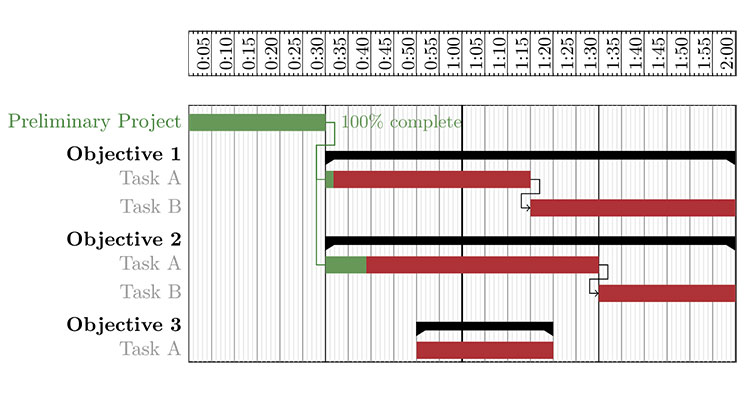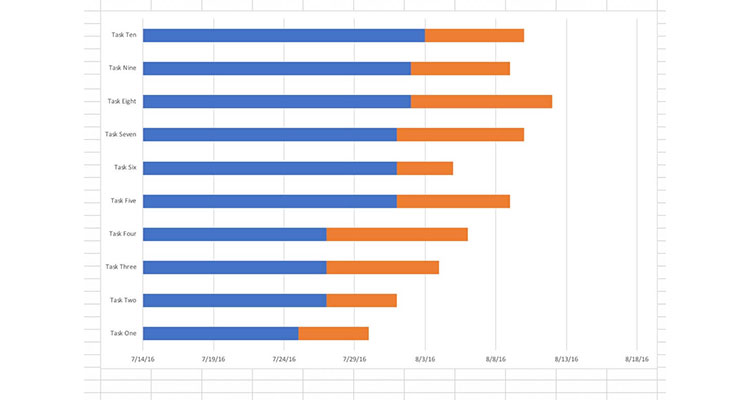Gantt Charts Are The Best Charts: Part 2
 In the first installment, I had mentioned that Gantt charts used to take up an entire wall. That meant that they weren’t mobile, which required team meeting to be planned in the office where the Gantt chart lives.
In the first installment, I had mentioned that Gantt charts used to take up an entire wall. That meant that they weren’t mobile, which required team meeting to be planned in the office where the Gantt chart lives.
Now, with software solutions, you can take your project’s Gantt chart with you and your team can review it on their own mobile devices. That provides a greater level of flexibility and collaboration as the project progresses.
With collaborative software, the project manager is able to assign tasks to team members, who in turn are able to filter the Gantt chart to only view the tasks they’ve been assigned and focus on their requirements for scheduling and materials.
That same use of filtering the Gantt chart allows team members to do several things. By filtering the view based on team member, resource, date or task, the project manager or other team members can break the project down into smaller, easy-to-understand segments.
With large projects, that’s especially handy in order to make sense of a long schedule and plan accordingly. As someone once said to me, “How do you eat an elephant? You take one bite after another.”
The opposite of filtering, or drilling down, is rolling up, or taking a zoomed out view. Zooming out and seeing the status of everyone on the team allows for better decision making when changes need to be made. Knowing what everyone’s workload is like today and later on allows better allocation if other tasks need to be assigned along the way.
 That applies to managing resources and materials as well as personnel. Zooming out and looking at the task schedule allows you to manage the ordering and delivering of the materials for each task. And what if that delivery from your vendor is delayed? Then back to the Gantt chart to reschedule those tasks which are dependent upon that delivery.
That applies to managing resources and materials as well as personnel. Zooming out and looking at the task schedule allows you to manage the ordering and delivering of the materials for each task. And what if that delivery from your vendor is delayed? Then back to the Gantt chart to reschedule those tasks which are dependent upon that delivery.
Talking about delays brings up the subject of estimating. Whether or not the deadline for completion of the project is set by the contract, the timeline is ultimately determined by the aggregate of each separate task, in total. Just like a medieval castle is built by putting one stone on top of another stone, over and over, each task, and the task after that, leads to a completed project.
That’s why accurate estimation is crucial. Correctly estimating how long each task takes has a direct effect on the efficiency and accuracy of the project’s timeline. Assign too much time to a task and that leaves team members standing around with too little to do. Assign too little time and the work can end up being rushed, which leads to errors that need to be fixed, which ends up costing more time. It’s a balancing act.
Knowing how to effectively estimate is part art/part science and requires knowledge and experience of both the required tasks and the personnel involved and their abilities. This is part of the collaboration that is required, both during project planning and along the way, when the timeline needs to be adjusted.
Making adjustments to the timeline is something we’ll drill down into in the next installment.





